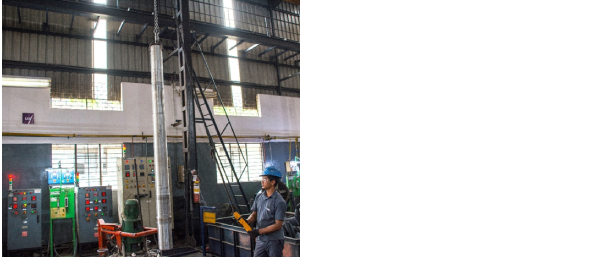
Solutionizing and Aging
This process is employed for austenitic steels and alluminium, calling for specialization in handling specific temperatures to deliver predicted properties.
Solutionizing (or solution treatment) and aging are two critical steps in the heat treatment process, primarily used for aluminum alloys, titanium alloys, and some steels. These processes are designed to improve the material's strength, hardness, and durability by manipulating the microstructure.
How It Works
Heating: The metal is heated to a high temperature (just below the melting point) where the alloying
elements (like copper, magnesium, or silicon in aluminum alloys) go into solid solution. This temperature
is typically between 930֯F to 1020֯F(500°C to 550°C) for aluminum alloys.
Holding (Soaking): The metal is held at this high temperature for a specific duration, allowing the
alloying elements to fully dissolve into the base metal matrix.
Quenching: After soaking, the material is rapidly cooled (typically in water or air). The rapid
cooling
"freezes" the alloying elements in a supersaturated solid solution. This quenching prevents the
alloying
elements from precipitating out and forces them to remain in the base metal in a non-equilibrium state.
Aging:
After solutionizing, the material is aged to precipitate out the dissolved alloying
elements in a controlled
manner, which strengthens the material.
Natural Aging:
Some alloys (like 2000-series and 6000-series aluminum) will age and harden
naturally at
room temperature over time. This is known as "natural aging."
Artificial Aging:
In artificial aging, the material is reheated to a lower temperature between
300֯F and
400֯F (150°C and 200°C) and held for a specific period to allow controlled precipitation of the alloying
elements. This controlled precipitation results in a fine distribution of precipitates in the metal, which
strengthens and hardens the material. After aging, the material is cooled.
Benefits
Increased Strength: The precipitation of alloying elements during aging creates fine particles within
the
matrix, which hinder dislocation movement, increasing the strength of the metal.
Enhanced Hardness: Aging improves hardness, making the material more resistant to wear, fatigue, and
deformation.
Improved Ductility: The solution treatment homogenizes the microstructure, providing better ductility
and workability before aging is applied to increase strength.
Tailored Properties: By controlling the aging process (duration and temperature), manufacturers can
tailor the material's final properties to meet specific requirements, such as maximum strength or
balanced ductility and toughness.
Stress Relief: Aging helps relieve internal stresses induced during quenching, reducing the risk of
cracking or warping.
Corrosion Resistance: In some aluminum alloys, solution treatment followed by aging can improve
corrosion resistance by eliminating unfavorable phases or microstructures.
Typical Materials Used
Titanium Alloys:
2000 series (Al-Cu alloys): These are heat-treatable aluminum alloys that benefit greatly from
solutionizing and aging, often used in aerospace applications for high-strength components.
6000 series (Al-Mg-Si alloys): These alloys are commonly used in structural and automotive
applications.
They are known for their good strength-to-weight ratio and corrosion resistance.
7000 series (Al-Zn-Mg-Cu alloys): These are the strongest aluminum alloys and are frequently used in
high-performance applications like aircraft structures, bike frames, and sporting goods.
Titanium Alloys: Titanium alloys, especially those containing aluminum and vanadium (e.g.,
Ti-6Al-4V),
undergo solution treatment and aging to increase their strength while maintaining their excellent
corrosion resistance and low weight.
Nickel-Based Alloys: Nickel superalloys (used in jet engines and gas turbines) are solution-treated
and
aged to develop exceptional high-temperature strength and resistance to creep and fatigue.
Precipitation-Hardening (PH) Stainless Steels:
17-4 PH stainless steel: These steels undergo solution treatment and aging to precipitate hardening
phases, significantly increasing their strength and hardness. They are used in aerospace, medical
devices, and nuclear industries.
Magnesium Alloys: Certain magnesium alloys can be solution treated and aged to improve strength and
mechanical properties, often used in lightweight applications such as automotive and aerospace
components.
Applications
Aerospace Industry
Aircraft Structures: Solutionized and aged aluminum alloys (like 7075 and 2024) are used extensively in the construction of airframes, wings, and fuselage due to their excellent strength-to-weight ratio.
Landing Gears
High-strength aluminum and titanium alloys that have undergone solutionizing and aging are used in landing gear components for their ability to withstand high stresses and cyclic loading.
Automotive Industry
Engine Components
Aluminum alloys that are solution-treated and aged are used in engine blocks, cylinder heads, and other high-strength parts that require durability and heat resistance.
Chassis and Suspension
Lightweight aluminum and magnesium alloys, strengthened through aging, are used to reduce vehicle weight and improve fuel efficiency without compromising strength.
Bicycle Frames
High-strength aluminum alloys, such as 7000-series, are solution-treated and aged to make lightweight yet strong bicycle frames for competitive sports
Golf Clubs and Rackets
Aging improves the strength and resilience of aluminum and titanium alloys, making them ideal for sporting equipment like golf club heads and tennis rackets.
Medical Devices
Titanium alloys such as Ti-6Al-4V, treated through solutionizing and aging, are used in medical implants (e.g., hip replacements, bone screws) for their strength, biocompatibility, and corrosion resistance.
Defense and Military
Weapons and Armor: High-strength aluminum alloys are used in military vehicles, body armor, and weaponry where light weight and high strength are critical. Jet Engines: Nickel superalloys are solution-treated and aged to provide the high-temperature strength necessary for turbine blades and other critical components in jet engines .
Marine Industry
: Solution-treated and aged aluminum alloys are used in boat and shipbuilding for their excellent corrosion resistance and high strength, which are vital for marine environments. Industrial Equipment.
Pump Components
Precipitation-hardened stainless steels are used in pumps and valves, where high strength and corrosion resistance are required.
Molds and Dies
Aging of certain tool steels and aluminum alloys improves their durability and wear resistance, making them suitable for molds, dies, and other industrial tooling